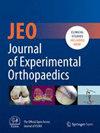A multicenter epidemiologic analysis of the injuries affecting female and male collegiate basketball players
Abstract
Purpose
The global rise in popularity of basketball has prompted an increased emphasis on understanding the injury patterns affecting players. This study analysed injury epidemiology and return to sport outcomes in Division I male and female collegiate basketball players. The authors hypothesise that ankle injuries are amongst the most common in this population and that there are similarly comparable injury rates between genders.
Methods
A retrospective review of a de-identified conference-specific injury database for male and female Division I collegiate basketball players from 2017 to 2021 was conducted. Injuries were stratified by anatomic location, gender, time missed from practice/competition, and diagnosis. Injury incidence was normalised per 1000 athlete exposure hours (AEH) and relative risk (RR) assessed gender-based differences.
Results
Of 853 athletes, 663 (77.7%) sustained 4532 injuries. Females were more likely to sustain any injury with injuries per 1000 AEH being 6.27 and 5.55 for males (RR: 1.23, confidence interval [95% CI: 1.15–1.32], p < 0.001). The most common injuries were ankle/hindfoot (22.2%), knee (16.5%), head/face (11.7%) and forefoot (9.8%) injuries. Females were significantly more likely to sustain knee (RR: 1.49 [95% CI: 1.27–1.75], p < 0.001), head/face (RR: 1.32 [95% CI: 1.09–1.60], p = 0.005), or midfoot/forefoot (RR: 1.42 [95% CI: 1.14–1.76], p = 0.002) injuries. Females were also significantly more likely to suffer a concussion (RR: 1.75 [95% CI: 1.30–2.36], p < 0.001) with 82 of 360 females (22.8%) experiencing a concussion and 64 of 493 males (13.0%). Of all concussions, 12.4% led to absences exceeding 4 weeks.
Conclusions
Female athletes experienced higher overall injury rates and specifically elevated rates of concussive, knee, head/face, and midfoot/forefoot injuries. While lower extremity injuries were most common across both genders, they typically resulted in limited time lost. These findings underscore the need for injury prevention programs addressing multiple body regions and highlight the importance of incorporating gender-specific considerations into training and return to play protocols to ultimately keep our athletes safe.
Level of Evidence
Level III, retrospective comparative study.




 求助内容:
求助内容: 应助结果提醒方式:
应助结果提醒方式:


